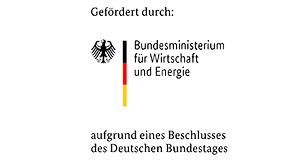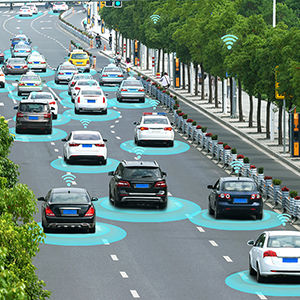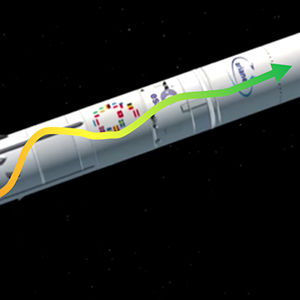Fraunhofer LBF represented in two pilot projects by the Federal Ministry for Economic Affairs and Energy on autonomous driving: VVMethoden and SET Level 4to5.
Autonomous Driving, Safety

Challenges for safe autonomous driving
Fully automated (VDA level 4) and driverless/autonomous (VDA level 5) driving functions have become a focal point of research and development worldwide in recent years. They constitute a promising potential solution to rise to the challenges of street-based transportation: the increase of transport efficiency, enhancement of road safety as well as reduced emissions. Safety validation plays a key role. In two pilot project of the Federal Ministry for Economic Affairs and Energy on autonomous driving, Fraunhofer LBF is working with partners to pursue the development of a systematic approach and methods for the practicable safety verification of autonomously driven vehicles in the urban environment in addition to complex modelling for the simulation-based development and testing of autonomous vehicles.
In L4/L5 systems, the driver is no longer available as a fallback level neither continuously nor within necessary reaction times. Therefore, automation must independently intercept and safely deal with all conceivable road transport situations and potential hazards.
New methods for the safety verification as well as for the simulation-based development of autonomous systems
In the VVMethoden project, Fraunhofer LBF is elaborating specific know-how in the development of test definition methods. Based on the state of the art, Fraunhofer LBF is working with the partners involved to develop a methodical approach for the derivation of system and test requirements. Non-degradative driving states are being taken as the basis for this in a first iteration. In successive iteration loops, the methodology will be refined in order to incorporate probabilities of the criticalities and system degradations as well as degradative functionality strategies (fallback levels, emergency mode strategies) to be taken into consideration. The methodology used is validated based on the urban intersection use cases.
In addition, in the SET Level 4to5 project, Fraunhofer LBF is working especially with the modeling of various systems and components for the simulation of an autonomously driven vehicle. Here, the integration levels of the models extend from the individual actuators of the drive train, steering and brake actuator technology through to the overall vehicle dynamic and the planning and regulation of the vehicle trajectories. The aim is to harmonize the interfaces within modular simulation systems and to prove the applicability of the simulation to the scenario-based verification of automated driving functions. For this purpose, alongside basic implementations of the system components, physical interactions are reproduced and relevant failure modes implemented in actuator systems as part of the test scenarios.
Beide Projekte werden gefördert vom BMWi.



Contact
- Prof. Dr. Thilo Bein
- Phone: +49 6151 705 - 463
- thilo.bein@lbf.fraunhofer.de
- Dr. Jürgen Nuffer
- Phone: +49 6151 705 - 281
- juergen.nuffer@lbf.fraunhofer.de




